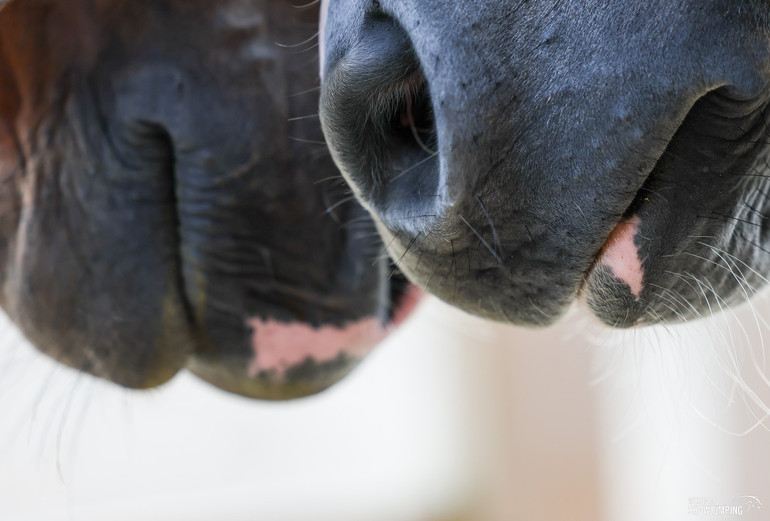Text © World of Showjumping
A study on the EHV-1 outbreak in Valencia, Spain, in 2021, has found that the stabling conditions – such as tent stabling with poor air quality for a big group of horses – played a crucial role in the outbreak. The study – published in the Journal of Equine Veterinary Science – also found that the age and gender of a horse were among primary risk factors, with horses older than nine that were stabled in the middle of the tent being most vulnerable to developing neurological symptoms.
When the EHV-1 outbreak started in 2021, a total of 752 horses were at the venue in Valencia, Spain. While 592 horses left as the event was cancelled due to the outbreak, 160 remained blocked at the venue. Based on the volunteering from the caretakers, epidemiological data was collected from 74 horses for the referred study. With complete epidemiological, clinical and laboratory data on 60 horses, the study was based on that group of 60 – which was similar to the whole population on site. The median age of the horses in this group was nine, including 32 mares, 24 geldings and four stallions, originating from seven different countries. The significant difference between the studied group and the total population on site was that most of the studied group of 60 horses were vaccinated against EHV-1, while most of the total population on site were not.
At the venue in Valencia, 440 temporary boxes in one big tent were used to house the horses on site. The boxes were in four rows of 20 boxes and 12 rows of 30 boxes with ten boxes in each block, with the only air ventilation being the entrances to the tent. According to the study, horses stabled in the middle of the tent were over nine times more likely to develop EHM – EHV-1 myeloencephalopathy, a serious manifestation of EHV-1 infection which affects the central nervous system – than a control group stabled on the edges of the tent.
Postulating that the lack of ventilation leads to a greater exposure to virus aerosols shed by sick horses, the study highlights the importance of stable conditions and biosecurity measures such as clinical examination on arrival and measure of rectal temperature before and during events, as well as sufficient isolation infrastructure and the usefulness of PRC testing – although differences in results were seen between sampling techniques and laboratories.
The full study can be found here.
For the FEI’s own reports on the 2021 EHV-1 outbreak, click here.









